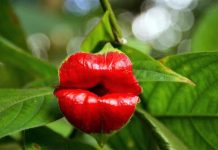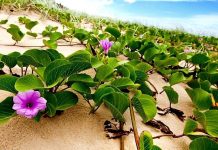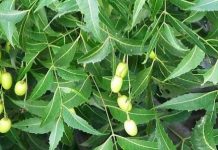Family: Caesalpiniaceae
Synonym: Cassia occidentalis L., Cassia falcata L.
Bengali/Vernacular name:Boro kalkasunda, Oksisena, Eski, Essi.
Tribal name: Dangor dattlong, Khtrange shag (Chakma); Kaing basok tung (Chak); Micia-kung (Lushai); Kojojjya, Ka-ja baong (Marma); Kusondra (Munda); Kalbeia (Pangkhoa); Haru, Rotha (Tripura).
English name:Coffee senna, Negro-coffee, Foetid cassia,Septic weed, Rubbish cassia, Coffeeweed, Stinking weed, Wild coffee.
Description of the plant: An erect, branched, suffrutescent herb, 1-3 m high, often shrubby.Leaves paripinnatelycompound, 15-20 cm long; leaflets 3-5 pairs, 2.5-10 cm long, ovate-lanceolate. Flowers in short peduncled few-flowered, axillary, corymbose racemes, and forming a terminal panicle. Petals 5, free, imbricate, 1.3 cm long, ovate-oblong, yellow. Fruit a pod, 8-13 cm long, oblong, flattened, compressed; seeds 20-30 per pod.
Plant parts used: Leaf, stem, flower, seed, root.
Herbal uses:Fresh juice extracted from leaves and stems of the plant is used to message on the chest twice a day for three days to treat chest pain.
Pea-sized pills made with the leaves and stems of the plant are taken twice a day (two pills each time) with warm water for two weeks to treat anorexia.
The powder made from dried leaves and stems of the plant is mixed with water, and then the mixture is taken thrice a day for three days to treat diarrhoea.
Leaves of the plant are made into a tea for treating afterbirth problems, cough, cold, headache, haemorrhage, and thrush.
An ointment prepared from the leaves of the plant is applied as a remedy for ringworm and other affections of the skin.
An infusion of seeds is drunk to calm one’s nerves, and as a treatment for kidney problems, worms, and cleaning womb and tubes.
An extract made from leaves and stems of the plant by boiling in water is taken for the treatment of strangury.
A decoction made with the leaves of the plant is used for treating jaundice.
Pea-sized pills made from leaves and stems of the plant are advised to take with 5 ml amount of honey thrice a day (one pill each time) for one month to treat gynecological complexity.
Decoction of leaves, roots and flowers is highly prized in hysteria to relieve the spasm; also relieves flatulence and dyspepsia.
An infusion made with the roots of the plant is used in the treatment of bilious fever, ordinary fever, stomach-ache, and to ease menstruation.
Poultice of leaves is used for skin irritation and eczema treatment.
An extract made with leaves and stems of the plant by boiling in water, and then hot bath is advised to have with that extract to treat mania infantum.
Distribution: It occurs all over the country as a weed, often forming dense mats by the roadsides and fallow lands.
Is this plant misidentified? If yes, please tell us….















… [Trackback]
[…] Here you will find 4265 more Info to that Topic: natureinfo.com.bd/senna-occidentalis-l-link/ […]